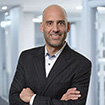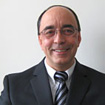
Hardev Grewal
CEO Plasmatreat PTNA & US - Hayward, CA

It’s NBA playoff time. Living in Chicago, I am reminded of the years where arguably one of the world’s greatest basketball players, Michael Jordan could not win a championship. Although the Bulls eventually won six titles in eight years during the 1990s success did not happen until Jordan built a strong team around him. For three straight years the Bulls battled the Detroit Pistons in the playoffs, and for three straight years they left bruised and beaten. The Pistons were simply the better team. As Jordan himself observed “talent wins games, but teamwork and intelligence wins championships.”
Plasma is an all-star in the role of cleaning, activating, and coating surfaces to make them for printing, coating or bonding. But the most successful applications are often those where there is coordination and teamwork with other parts of the manufacturing process such as process control, material handling, dispensing, or curing.
In a couple of weeks, Plasmatreat is teaming up with two other companies we have had great success with in the past; Precision Valve and Automation (PVA) and DELO Adhesives. Together we are presenting a technical webinar:
Fast Optical Bonding:
An Integrated Solution for Flat, Curved, and Flexible Displays
Thursday, May 12, 2016
2 PM Eastern Time
(there is no cost to attend)
This webinar discusses the latest trends in electronic display manufacturing such as changes in substrates, flexible and curved displays, and UV LED curing. For our part, Plasmatreat will discuss how plasma excels at cleaning and activating plastic and glass substrates for better performance. Our partners will discuss advance s in adhesives and sealants, dispensing and curing equipment, and system integration.
But the real benefit of this initiative is in providing customers with an integrated, team-oriented, solution. Many plant managers have learned the lesson of loyal Bulls fans – even with the best players, it often takes a team to win. Casey Stengel said, “finding good players is easy – getting them to play as a team is another story.” Teamwork avoids the blame and finger pointing when things go wrong. I am proud of Plasmatreat, but I am also proud that Plasmatreat has teamed up on so many occasions with leading industry suppliers to produce a successful process.
I invite you to attend this webinar. To register click on the link below:
https://attendee.gotowebinar.com/register/7488361753958739204
Recommend








Write a comment